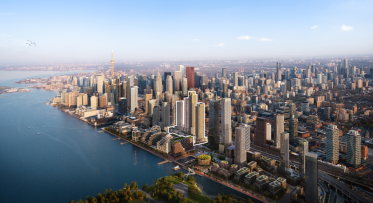Sustainable Skyline: How Mass Timber is Shaping Toronto’s waterfront
PUBLISHED: SEPTEMBER 13, 2024
In This Blog:
-
Mass timber wood products are known for strength and durability, which has increased timber use in buildings.
-
Mass timber provides various environmental benefits throughout its lifecycle compared to traditional building materials.
-
Increased productivity and mental health are some of the benefits for occupants of mass timber buildings due to its biophilic design.
-
T3 Bayside and Limberlost Place are leading the way in sustainable design on the waterfront by pushing the boundaries of mass timber construction for commercial and institutional uses.
-
As we set our sights on net zero and carbon positive communities, mass timber is one of the ways our development partners are rising to the challenge.
Mass timber construction is becoming increasingly popular as a sustainable alternative to traditional building materials. Although its contemporary use in building construction is fairly recent, it provides environmental and human health benefits, structural performance, and aesthetic qualities. In 2012, the National Building Code of Canada began to include provisions for new engineered wood products for construction. This was quickly followed by changes to the Ontario Building Code in 2015 when it started to permit the use of cross-laminated timber and other engineered wood products in low-rise construction, aligning with advancements in the National Building Code. Waterfront Toronto is at the forefront of mass timber construction, encouraging our development partners to push the boundaries of sustainable building innovations.
What is mass timber?
Mass timber buildings use large, solid wood panels for structural elements such as floors, walls, and roofs. This construction method leverages engineered wood products like cross-laminated timber (CLT), glue-laminated timber (glulam), and laminated veneer lumber (LVL). Each of these use different methods to bond and layer wood together to provide strength and durability in the finished product.
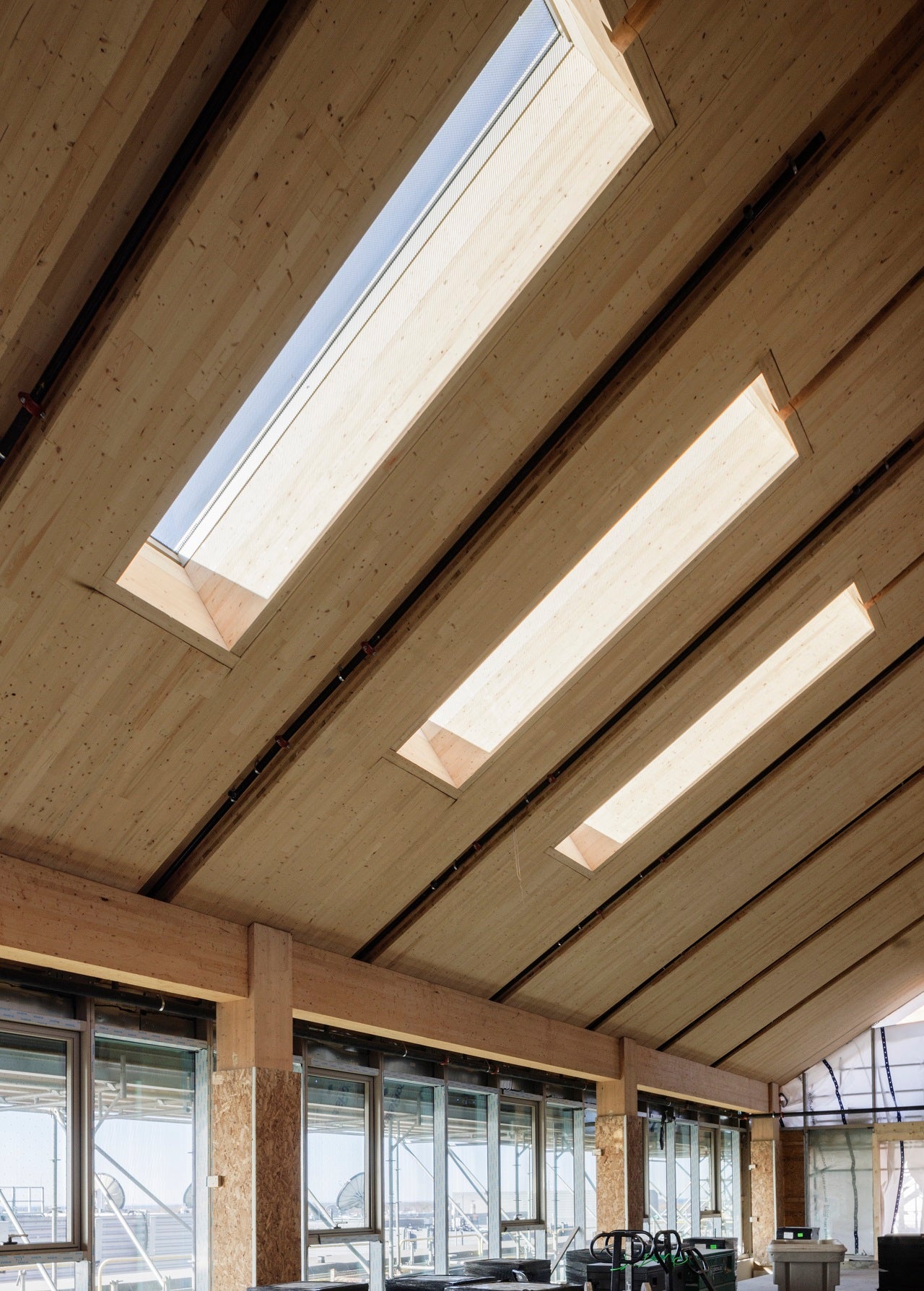
Skylights in the angled ceiling of Limberlost Place increase natural light in the building. Image: Salina Kassam Photography
When properly treated and maintained, it can be as strong as traditional building materials and has good fire resistance due to the charring effect that protects the inner layers of wood. Additionally, mass timber elements can be prefabricated off-site, leading to faster and more efficient construction. It is also lighter than concrete and steel, reducing building foundation requirements and transportation costs.
Environmental Benefits of Mass Timber
Using mass timber for building construction offers significant environmental benefits. One of the key advantages is carbon sequestration which is a process where trees absorb and store carbon dioxide as they grow, reducing the overall carbon footprint of buildings using timber for construction. Additionally, the production of mass timber emits less CO2 compared to the production of traditional materials, resulting in lower greenhouse gas emissions. It also improves the energy efficiency of buildings through timber's natural insulating properties which reduce the need for excessive heating and cooling.
Since timber is a renewable resource, it can be sustainably harvested and replanted, ensuring a continuous supply without depleting natural resources. The ability to prefabricate timber components also leads to precise material use and less construction waste going to landfills given that it is both biodegradable and recyclable.
Together, these benefits make mass timber a sustainable and eco-friendly choice for modern construction.
Improvements for Human Health and Wellbeing
Mass timber building construction also offers various human health benefits. Mass timber contributes to a healthier indoor environment as it tends to have lower levels of volatile organic compounds (VOCs) compared to non-timber buildings. Additionally, the natural wood surfaces in mass timber buildings can help regulate humidity levels, creating more comfortable and stable indoor climates and potentially reduce the incidence of respiratory issues and other health problems related to poor air quality.
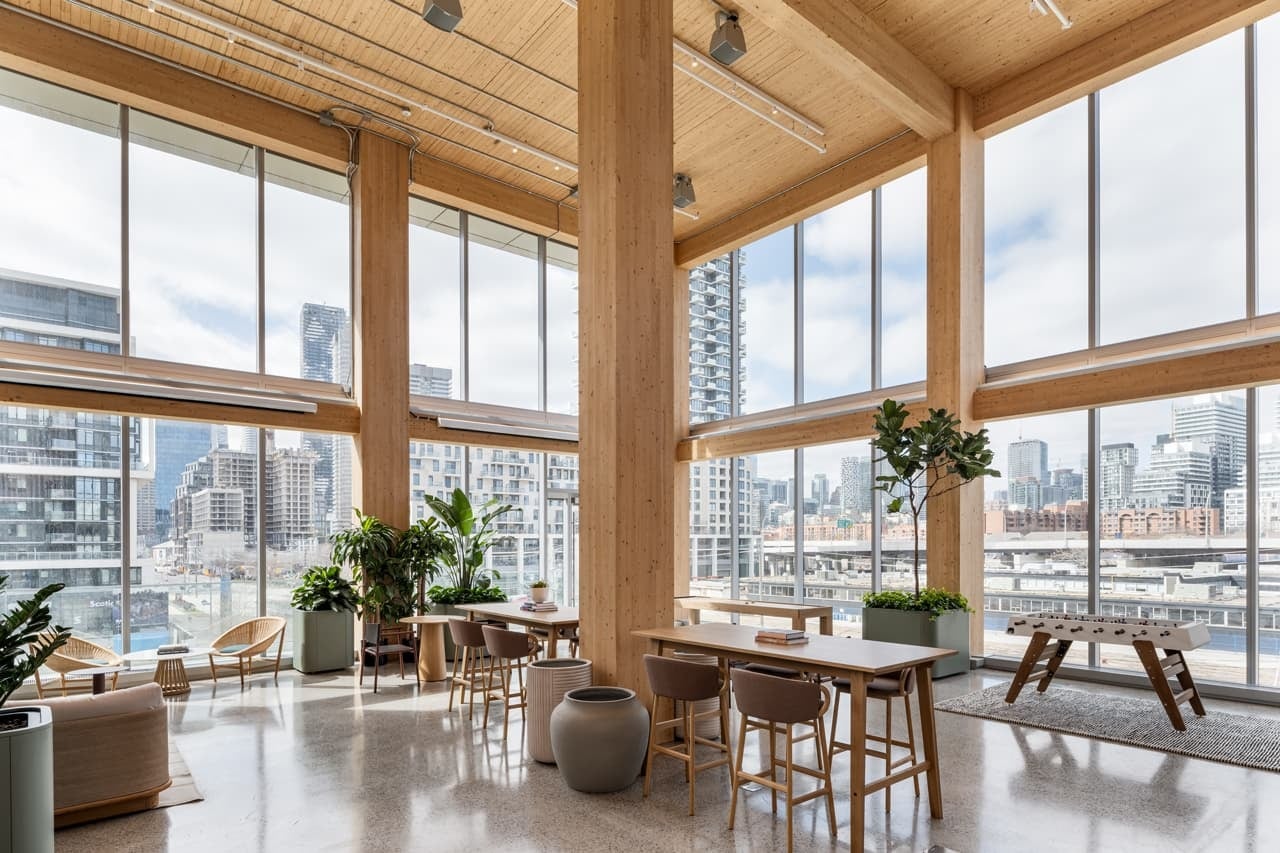
Mass timber also offers inherent benefits to human health and productivity by connecting humans to nature. Image courtesy of Hines.
The concept of biophilia suggests that people have a deep-seated connection to the natural world, which can have significant psychological and physiological benefits. Mass timber buildings embody biophilic design principles, as they often feature exposed natural wood, which has been shown to reduce stress, enhance mood, and improve cognitive function in built environments. The visual and tactile qualities of wood can evoke a sense of calm and well-being, similar to spending time in nature. This can lead to increased productivity, better mental health, and overall satisfaction among building occupants.
Building a sustainable skyline on Toronto’s waterfront
Waterfront Toronto is committed to delivering resilient, healthy, and sustainable complete communities. It is for this reason that we have pushed our development partners through our Green Building Requirements to embrace innovative solutions like mass timber when designing buildings along the waterfront, regardless of the use type. The waterfront has become a leader in mass timber construction with new mass timber buildings forging the way to a sustainable future, including the one we call home.
T3 Bayside
Completed in October 2023, T3 Bayside is a new mass timber development by Hines that provides over 250,000 square feet of innovative office space in East Bayfront. Designed by Danish architecture firm 3XN Architects, along with local firm WZMH Architects, at 10-storeys, it is one of North America's tallest mass-timber office buildings, highlighting the waterfront’s leadership in design excellence and innovation.
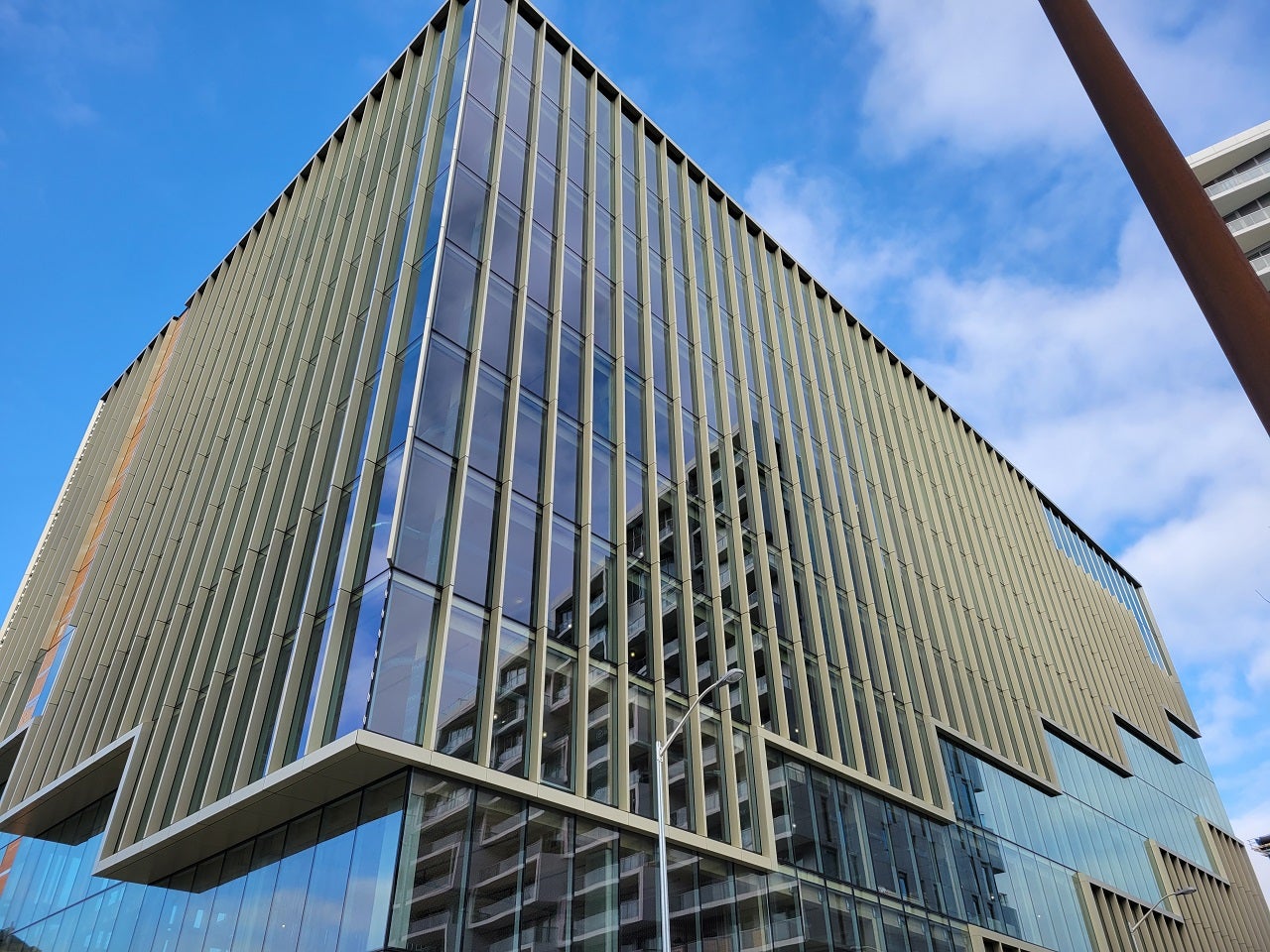
Mass timber is integral to Hines’ vision for T3 Bayside. It’s the first ‘T’ in its name, which stands for Timber, Talent and Technology. Like its future East Bayfront neighbour, Limberlost Place, T3 Bayside is both a mass-timber and tall-wood building. T3 was constructed using young trees instead of old growth trees; they were sourced from managed forests to minimize impact and ensure renewability of the forests. By using sustainable wood instead of standard building materials, T3 Bayside will store or prevent more than 10,000 metric tonnes of carbon emissions - the equivalent of taking 2,708 cars off the road for a year.
In addition to mass timber, at least 20% of the remaining building materials used to construct T3 Bayside, by cost, are sustainable materials. This includes bio-based materials, FSC certified wood products, salvaged, refurbished and reused materials, and recycled content. T3 Bayside is targeting LEED Gold and WELL Certification and has achieved WiredScore Platinum Certification, reflecting its focus on promoting occupant wellness, while limiting the building’s impact on the natural environment.
As the first mass-timber building completed on the waterfront, Waterfront Toronto was excited to demonstrate our support for innovative building solutions and confidence in the area’s continued growth and vibrancy, by moving our own offices to T3 Bayside in January 2024.
Limberlost Place, George Brown College
Demonstrating its leadership in green building, George Brown College hosted a design competition seeking a tall-wood, low-carbon building to expand its waterfront campus. In April 2018, Limberlost Place (formerly the Arbour), a 10-storey mass timber building from Moriyama Teshima Architects and Acton Ostry Architects was announced as the winning design.
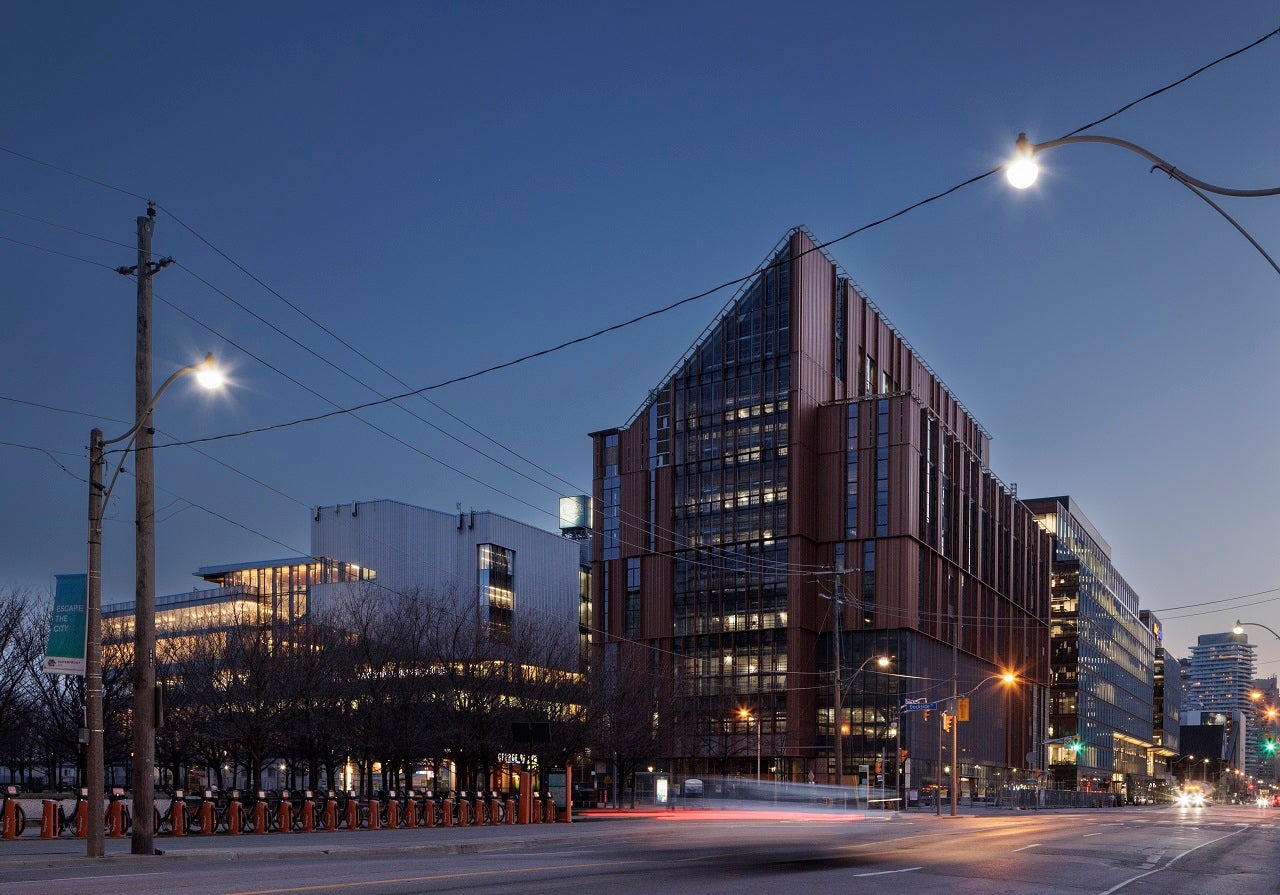
Image: Salina Kassam Photography
At the time of the competition, the Ontario Building Code only permitted mass-timber buildings up to six stories with similar height restrictions in the National Building Code. However, in 2022, Limberlost Place contributed to significant revisions of the national and provincial building codes to allow for mass-timber buildings to reach up to 12 stories, promoting its use in mid-rise and high-rise buildings. Currently under construction and scheduled to welcome students in 2025, it will be the first institutional building in Ontario of its size constructed from mass timber with net-zero carbon emissions.
In addition to using mass timber, the net-zero carbon emissions building includes solar chimneys to create natural convection, pulling air upward and drawing fresh air into the building from operable windows. It will also use deep-water cooling, circulating water pumped from Lake Ontario throughout the building to cool it. Additionally, rooftop solar panels will generate energy used within Limberlost Place.
These strategies will ensure that the building’s performance exceeds Waterfront Toronto’s Green Buildings Requirements by achieving the highest tier of the Toronto Green Standard.
Waterfront Toronto continues to push the envelope towards a more sustainable future. We do this by requiring our development partners to meet high but attainable sustainability standards by establishing the outcomes waterfront developments must achieve — without dictating how. Focusing on outcomes instead of methodologies frees designers to find their own ways of achieving sustainability targets, an approach that can drive technical innovation. As we set our sights on future net zero and climate positive communities, mass timber construction is one of the ways our development partners are rising to the challenge.
Stay up to date on the exciting work that is happening along Toronto’s waterfront by subscribing to our newsletter.


